There is a lot of ground to cover this week—starting with a very important announcement—so let’s get to it!
I have been working on a project (under wraps 🤫) for the better half of last year. It has been on my mind since freshman year, but I have simply never found the time or motivation to do it…until sweet November of 2022.
While it has been functional for some time now, I hesitated to share it until I had something more concrete to show for it. What started off as an excuse to get better at coding turned into something much more exciting and fruitful. There are countless skills I learned, connections I made, and things I discovered, unbeknownst to me when I started this project.
So without further ado, allow me to share my most personal project yet, my very own website:
aaryamanpatel.com!
To build this website, I chose not to use any of the website building sites like Wix, Squarespace, Webflow, or WordPress because of two reasons: one, I found them to be quite expensive, and two, they created dependencies for when I would need to update the website. Instead, I coded the whole thing (with some help) from scratch.
When I first started working on this website, I asked myself, “What does my ideal website look like?”
I wanted it to encapsulate and portray everything that made me “me”. I started with a list of everything that I’ve created or worked on over the years. From my exquisite collection of Spiderman pictures to the music I’ve produced, I wanted this to be the canvas that displayed a collage of my mind.
These are some of my notes and sketches from back in November before I had started coding the website:
And this is what they looked liked once I coded them:
I have spent months fervently designing, taking notes, studying hundreds of websites (maybe more than I should, and coding between (and during) classes, holidays, and especially at 2 am. You never know when inspiration might strike.
One of the biggest challenges of making this website was figuring out all the backend1 for it. Each project required a different infrastructure to work the way that I wanted it to. The blogs needed a simple way to be written and uploaded, the content configuration needed to be adapted for different screen sizes, pictures needed to load faster, and the image gallery needed an Image Slider and Navigator.
Take the above image gallery, for example. How does the website know to show you the full-screen image when you click on it, and return to your previous screen when you hit “X”? Or how does it know what the next image is when you hit the arrow key? This is all that the magic of the backend.
It took a lot of trials and failed attempts to finally get this feature working (last week!)
Troubleshooting problems taught me more than any YouTube video or article ever did. I took detailed notes of every problem I troubleshot, new features that I learned, and why something worked or did not work, so that I could use it in the future as I was developing other parts of my website.
By the end, I had learned how to use and understand GitHub, VS Code, Developer Tools, Vercel, AWS, and programming languages like Markdown, HTML, CSS, and JS.
Looking back, I realize that I had truly started from ground zero!
I wanted to release this website much earlier (in December), but it was half as complete as it is today. It did not have a functional gallery, a blog, or any projects, as a matter of fact.
There are so many stories and hidden details throughout the website that I cannot possibly compile them all in one post. There was careful deliberation over every font style, color, positioning, and layout of the pages. I did not want this to be a boring website. I wanted it to excite its viewer, and excite me!
Making this website has given me the confidence to work on more important and much harder problems. More importantly, it has helped me develop a frame of mind that can be applied to any project in the future.
However, this is just the beginning. There are so many more projects coming soon on the website. The films I have made over the years, more photo albums, design projects, piano sessions, and engineering projects to begin with!
There is still some backend stuff I am developing right now to improve the user experience for some of the pages I mentioned. I will send an update once I have more to share.
Until then, enjoy exploring the website! :)2
Weekly updates!
Music
As promised, here is the Succession Theme, by yours truly:
It was much simpler than many of the songs that I’ve played before.
However, the job is still unfinished. If you’ve listened to the full theme before, you’ll notice that my video is missing the latter half of the theme. Although I had started learning this with the intention to only cover the main riff, I thought at the end, “Why not go all the way?”
So I’ve decided to continue learning this and release a full version when I’m done.
In the meantime, enjoy another great piece of music:
Reading
“Ordinary people can do extraordinary things when they all focus on a common goal”
The new book of the week (Yes! another one) is “Zero to One” by Peter Thiel. This book has been at the back of my mind for some time now, and it has been coming up in some of the conversations that I have had recently (and my Twitter feed). So, it didn’t take me long to go to the University Library’s website and request it. I will be jumping right into it once I’m done reading “India Unbound”.
I spent the last week solely focusing on “India Unbound”. This book has given me so much context about Indian governance and markets. Talking with the people that have lived through these times makes reading it all the more engaging.
India has a very rich history of entrepreneurs. However, bureaucracy has not always been very kind to them.
I spent a lot of my time this week with the businessmen of India, learning how they established and expanded their businesses during a time when the government was apprehensive of private businesses. JRD Tata, the owner of ‘Tata’—one of the oldest and most successful companies in India— was paying more than 100% of his income in taxes every year, thanks to the “wealth tax” on top of his already high (97%) income tax.
Despite such high tax collections that were being used to fund the nationalized industries, they couldn’t generate any significant returns to the country’s economy. JRD Tata explains it quite well:
“I am convinced that a prime cause of the inefficiency and high cost prevailing in most public enterprises does not lie in the quality, competence, or dedication of their management and staff, but in the continual denial to them of the degree of managerial freedom of action essential to the efficient management of any large undertaking”
While socialism feels extremely noble in principle, it fails in practice because of one very important factor: lack of incentives. When you nationalize sectors/industries like the airways or manufacturing, you automatically kill all incentives for them to improve at a rate conducive to national development.
Globalization was a concept that got introduced quite late in India—44 years after its independence. Years of foreign governance had made its people averse to any foreign involvement in the country. However, what they did not realize was that the road goes both ways. By cutting access to foreign markets, the industries in India suffered.
“Competition is the school in which companies learn to perfect their skills. By closing the economy and discouraging competition, socialism made Indian business houses complacent and insensitive to customer needs. They lost the incentive to improve their products and acquire marketing skills.”
The strong hold on all industries was stifling the growth of the country and especially hurting entrepreneurs like JRD Tata and GD Birla who were, in retrospect, pioneers.
I jumped into all kinds of rabbit holes this week trying to learn more about these businesses—how they started, why they ended up being successful, etc.— demanding answers and following the trail at the turn of every page of the book. There is no end to learning.
Many people can make profitable businesses, but very few can successfully manage them with strong principles and morals. One such company is ‘Tata’.3 There are some very important lessons that I learned from their story:
Take measures for Employee Welfare
Regardless of how big or small your company is, always look after the people that work every day to make it what it is. There are so many lives that your business affects on a daily basis, and that should not be taken for granted. Profits shouldn’t cloud basic human morals.Adopt resilience in the face of adversity
It is not always going to be sunny running a business. There will be times when you have to cut losses and just work with what you have. In those times, it is important to be steadfast and determined to find ways to come out of it.Diversify your portfolio
One cannot predict the market. Your most successful product might lose demand with time. So, it is important to be involved with multiple sectors and grow in every direction that you can.Value addition to society
This is the most important principle of all. Whatever you make should add value to society, not take away from it. Your product/service should help empower those that use it.You can do it all!
The Tata Group is a living example of the fact that you can do it all. Today, they have educational institutions, steel and cotton mills, hospitality services, airlines, IT companies, automobile companies, and food and consumer product companies successfully established in the country. If you have a dream and the desire to fulfill it, you can do it all!
I am starting to love history, studying people, and finding connections among the events unfolding during that time. It makes knowing a person so much richer. You start to see the whole picture rather than the most glamorous parts of it.
The Mona Lisa becomes more beautiful when you have the context to understand and appreciate it. The valley looks more beautiful when you see it from the top of a mountain. I am at a similar precipice for Indian history and its people.
Learning Spanish
“Slow and steady wins the race.”
It is a weird feeling. In the app, I feel like a master. I am finishing exercises in under 2 min and breezing through all the units. However, when it comes to listening and understanding in real life, I get absolutely stumped. I am very used to listening to or seeing words in specific contexts, so when I see them being used differently, my brain gets confused.
This week was a wake-up call for me. My dear Spanish-speaking friend and I were watching some videos in Spanish to see how much I could understand from a conversation—I could barely recognize any words. I could read between the lines to some extent, but for the most part, I was lost. The number of new words caught me off-guard. There were so many words that I had never heard of before!
With Duolingo, I have been living in a kind of bubble. It has made me believe that I am making great progress in Spanish. “Congratulations, you’ve entered the Ruby League!” While in reality, it barely equates to anything significant.
This pace is simply unacceptable. 5 weeks into this, I should at least be able to understand and hold a conversation!
So, starting now, I will be pursuing more avenues to challenge myself and learn. I will try to have regular conversations and listen to more people having them, through podcasts and videos. I need to fully immerse myself in the language until it starts to reveal itself.
Strategy: Move fast, make mistakes, correct, and continue.
VAMOS!
Photo of the Week
It has been getting tougher to find the time to do everything recently. With the number of personal projects and explorations going out of hand, I have had to take time off some things that I was already involved with.
Our time is like an Apple Pie—precious and finite. We are given a fixed amount of it every day, which gets cut into smaller and smaller pieces with every task that we choose to do. We can devour the whole thing at once if we want or choose to have some portion control. The more things we do, the more the pie gets divided, and the smaller each piece gets. Sometimes, our guilty pleasure will make us want to eat a bigger piece, leaving less for the other time. But, it won’t grant us another pie.
I want to end with a question, “How do you eat your pie?”
I don’t know why I started talking about pies.
It has been a long week.
Mantente Curioso,
Aaryaman
If you enjoyed reading this and would like to follow along on this journey of endless curiosity, consider supporting the Newsletter!
Feel free to leave a comment, if you would like
And share!
There are two aspects to a website: the front-end and the back-end. The front-end refers to all the things that a user sees when they open a website, i.e. the aesthetics. The back-end comprises of all the things that make the website functional and responsive, such as an image gallery.
Special thanks to Ishani and Juan David for their help when I was just starting to build this. Once I had the momentum going, I was able to learn everything that I needed to make this website work.




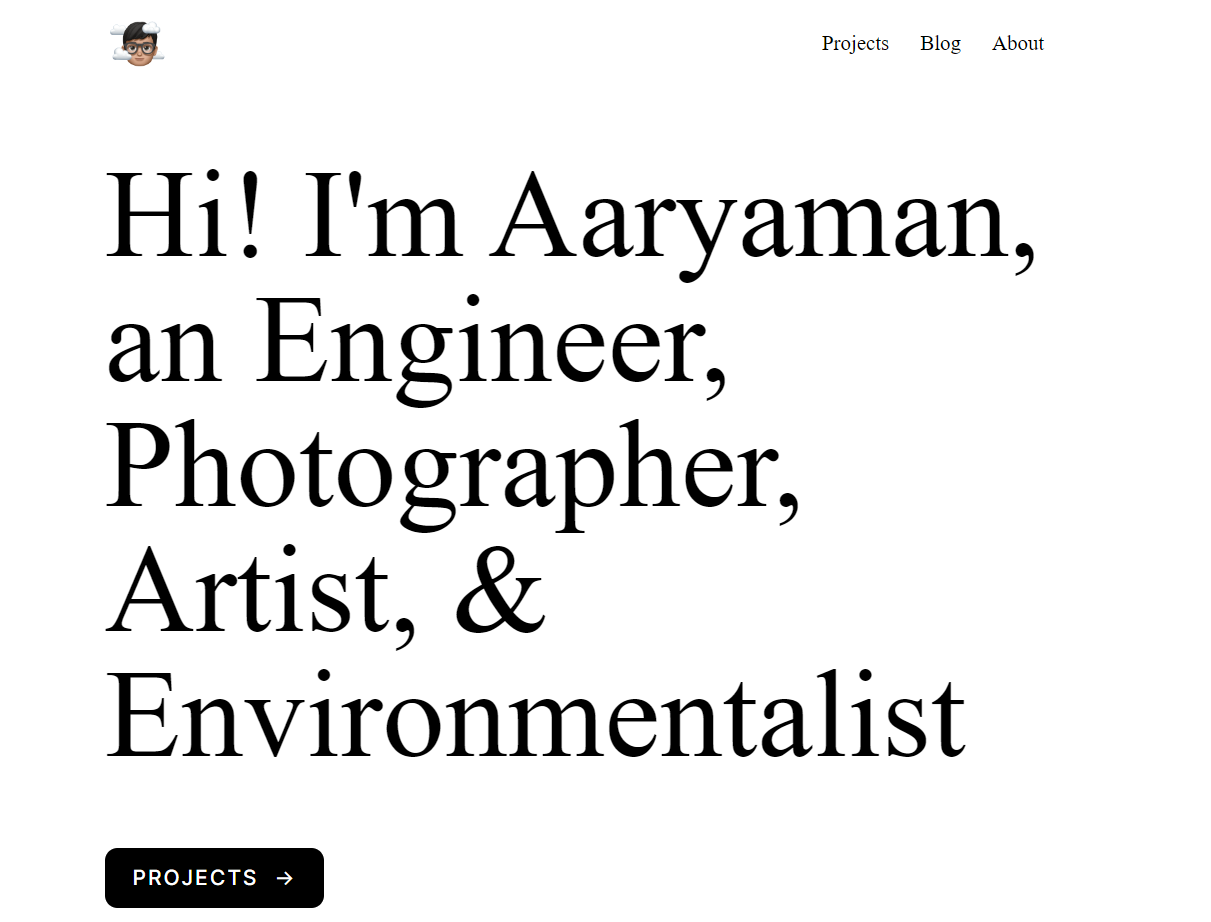
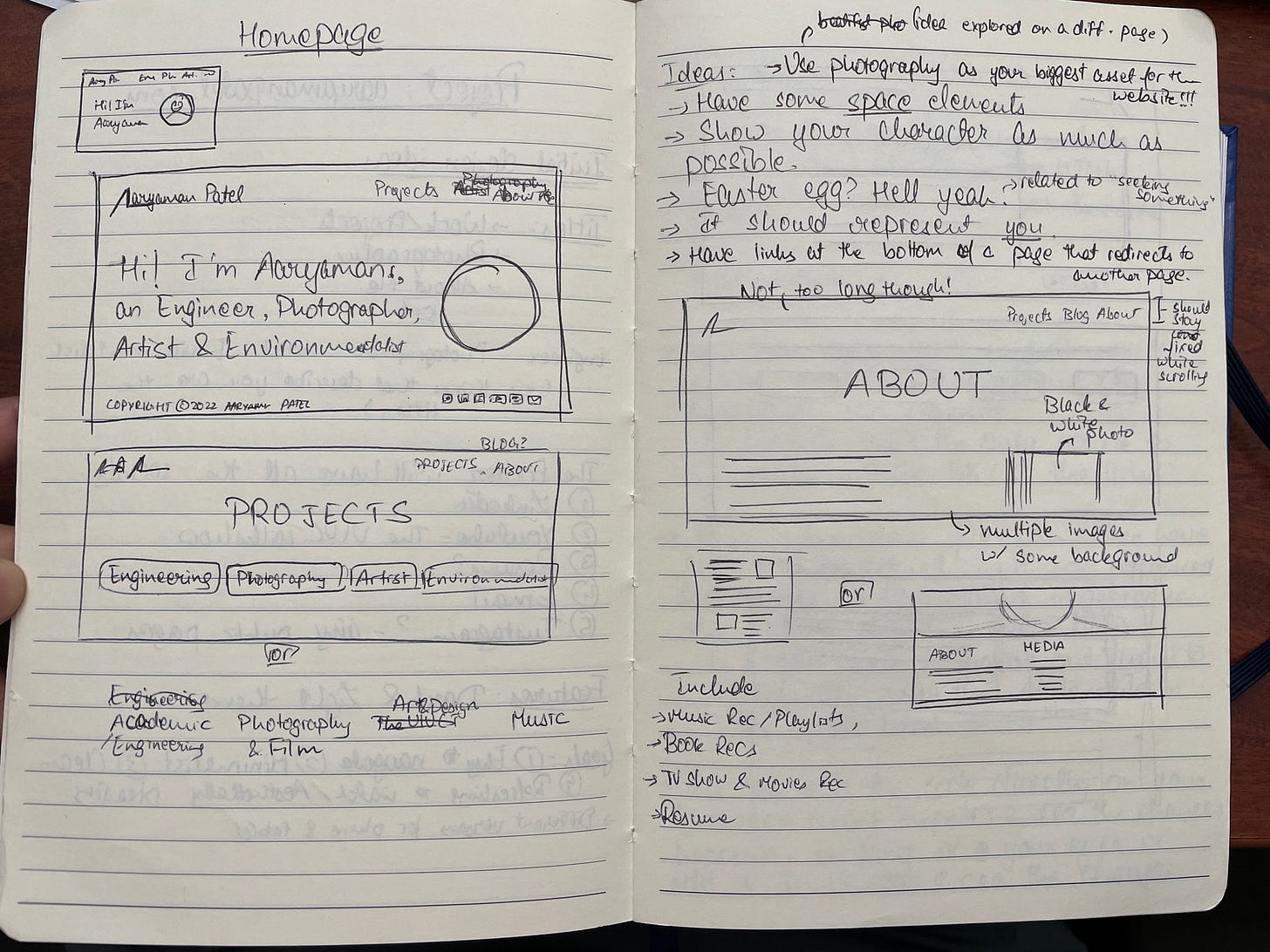

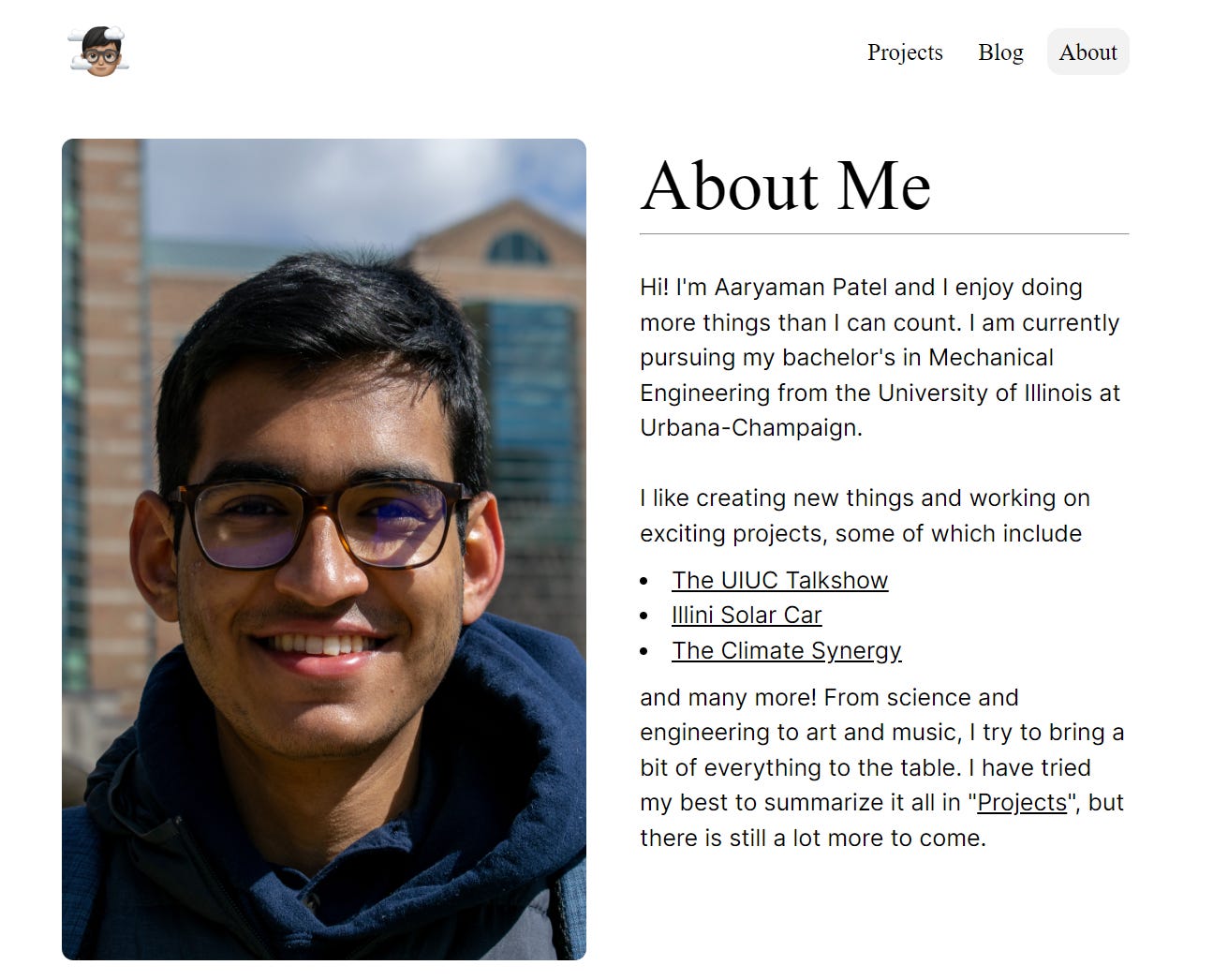
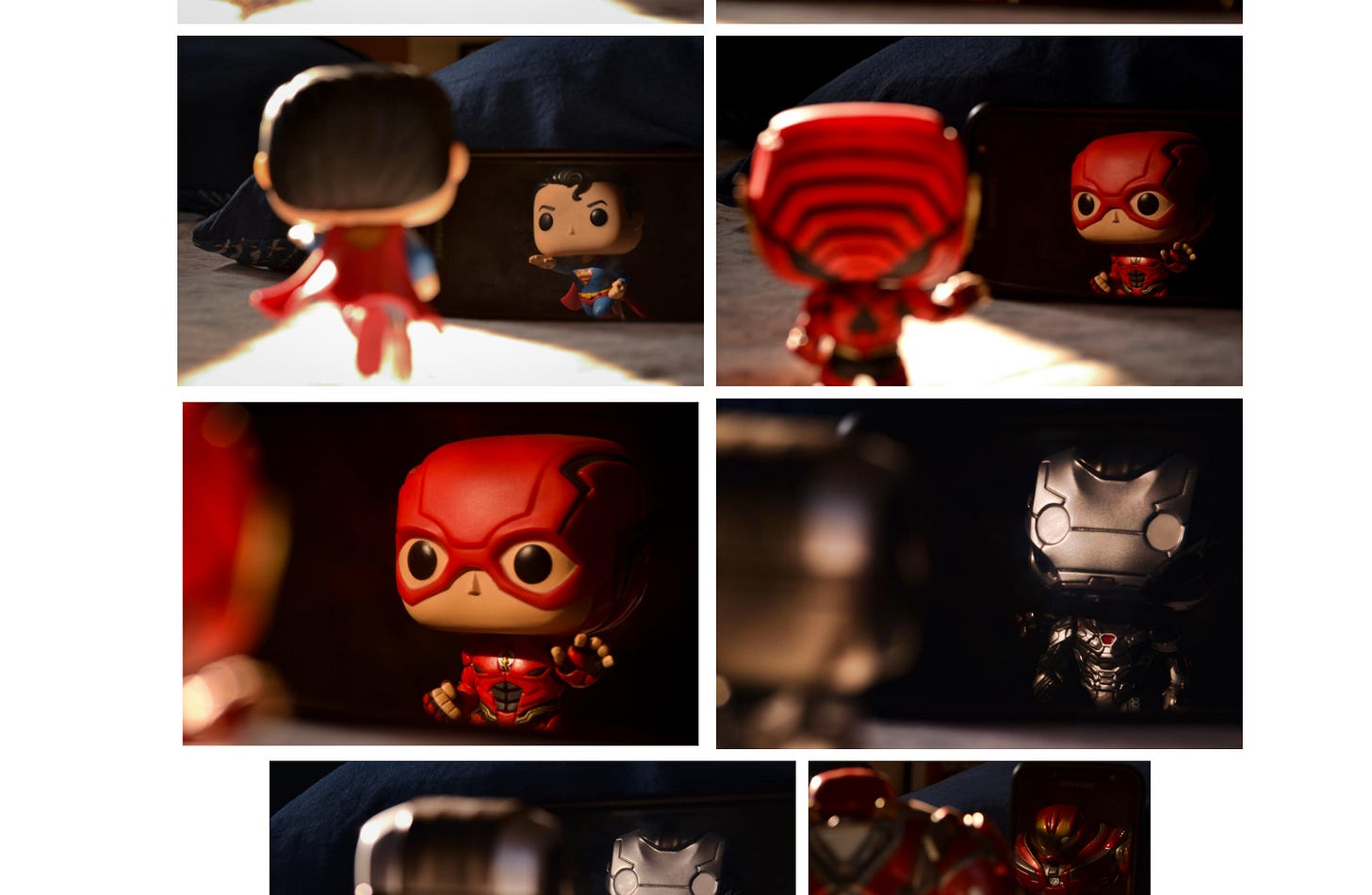

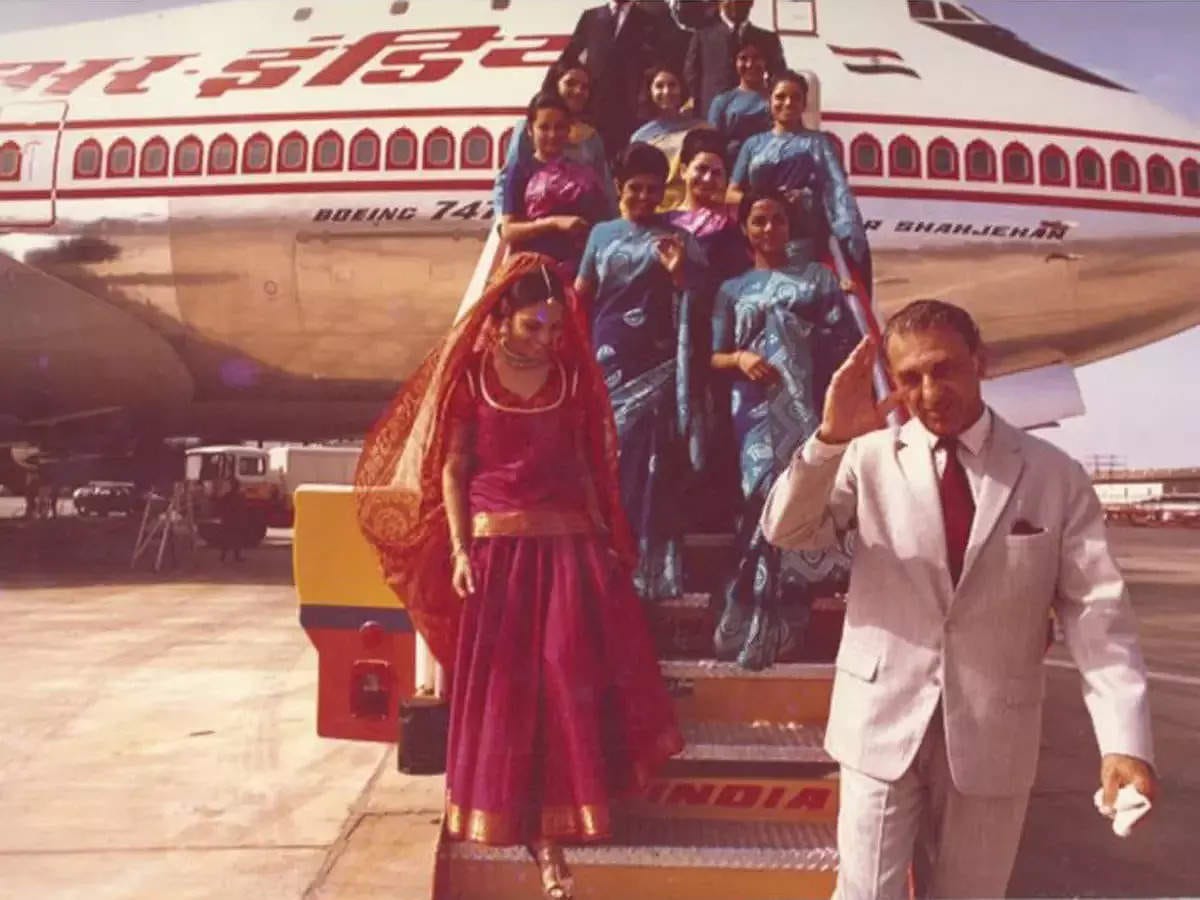
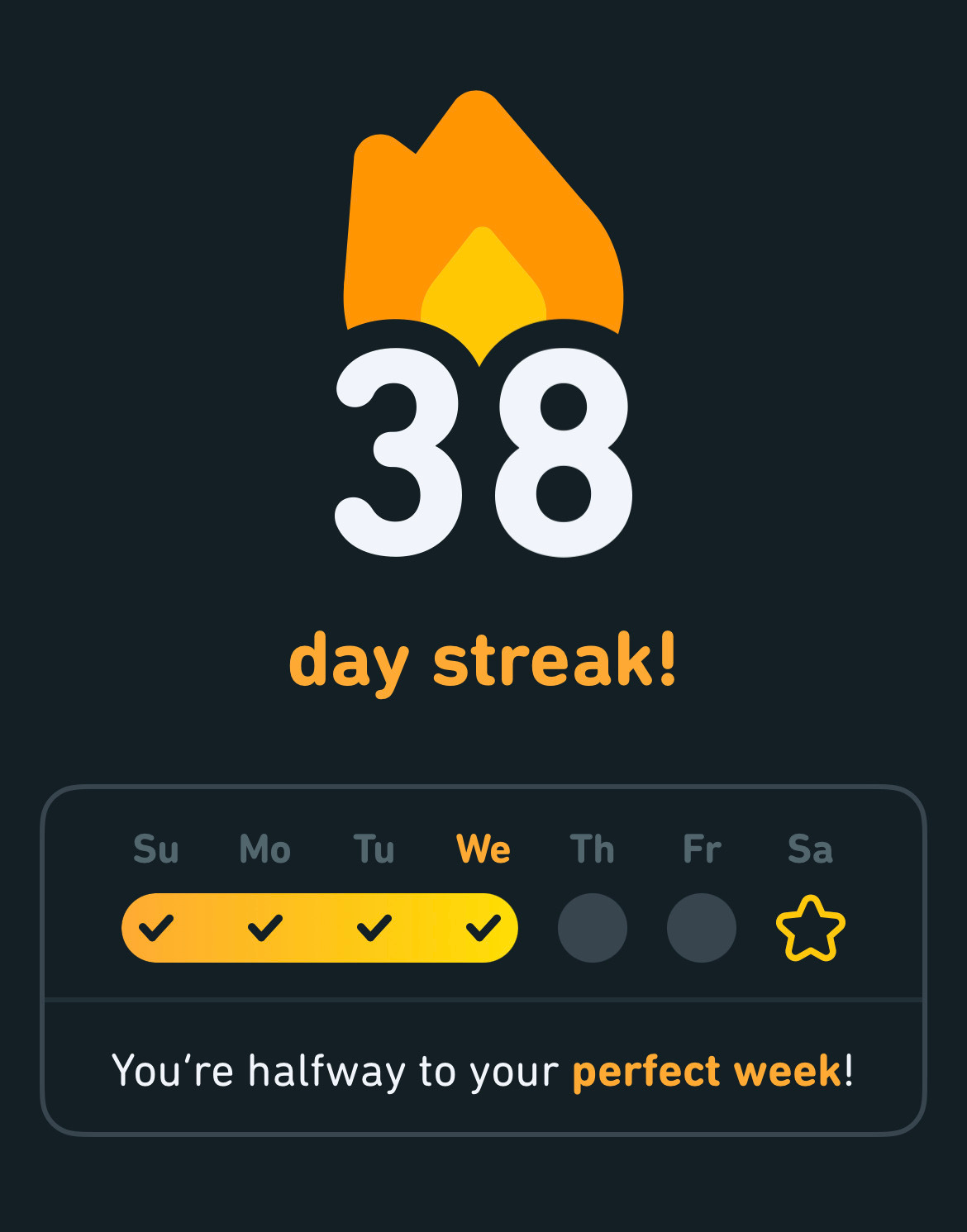

Comprehensive newsletter issue by a comprehensive human.